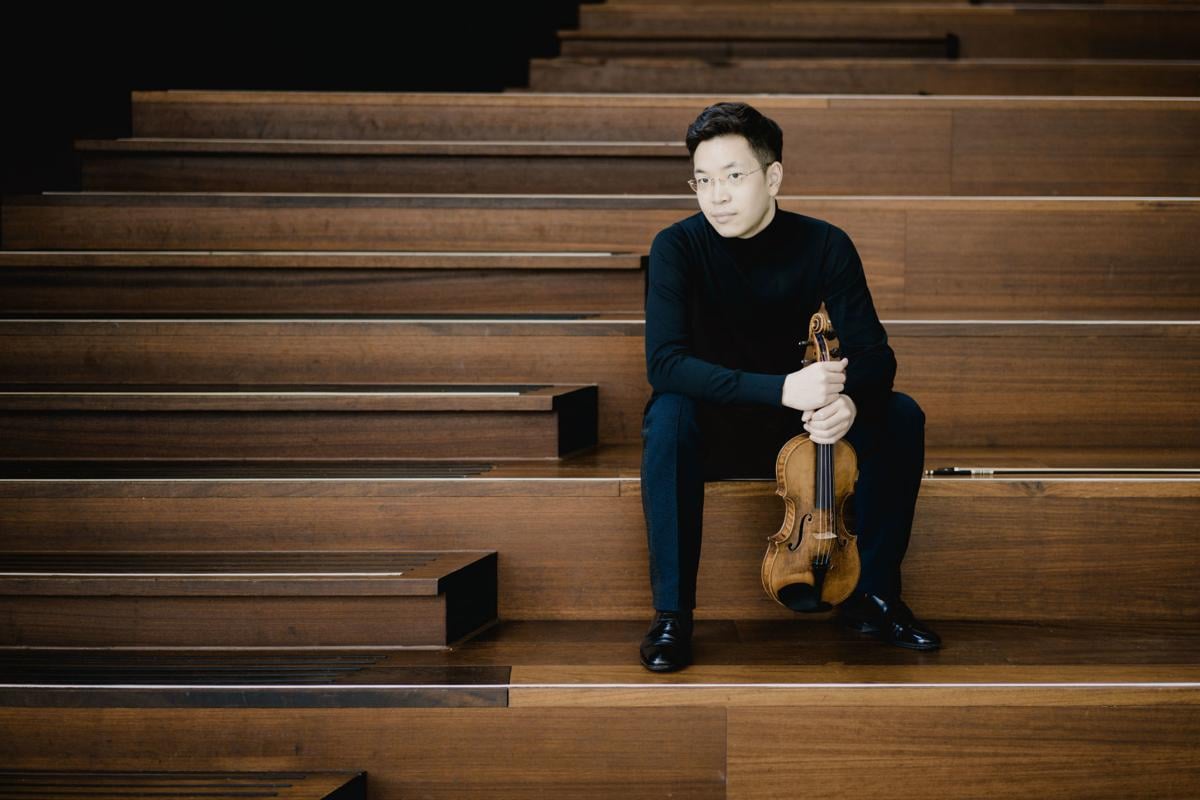Violinist Paul Huang was in the Tucson audience last March when the Escher Quartet performed the world premiere of Chris Rogerson’s String Quartet No. 4.
This weekend he will be across the courtyard at Tucson Music Hall, where he will be on stage with the Tucson Symphony Orchestra performing Barber’s Violin Concerto.
“It’s wonderful to be back again,” he said, but he wasn’t referring to the 2019 visit; he was recalling a time 10 or more years ago when he played a recital at the University of Arizona, the details of which are a bit lost with time.
Huang, 30, made a point to be in the audience at the 2019 Tucson Winter Chamber Music Festival to support composer Chris Rogerson at the world premiere of his String Quartet No. 4. Later this season, the Taiwanese-American violinist is performing a new work by Rogerson that was commissioned by the Wolf Trap Foundation for the Performing Arts.
His debut with the TSO, under the baton of guest conductor Manuel Hernández-Silva, returns him to a piece that he rates as one of his favorites. In fact Barber has played a big role in his career, which started when he picked up a violin at age 7 and has earned him glowing reviews, a handful of prestigious contest wins and the pivotal Avery Fisher Career Grant and Lincoln Center Award for Emerging Artists.
“I get asked to play the concerto quite a bit these days,” Huang said during a phone call from home in New York last week.
The Barber Concerto is “one of the pinnacles of the American violin concertos. We don’t have that many great American violin concertos from the 1930s or ’40s and this is one of the pinnacles of the Romantic period and for many good reasons,” he said, then ticked off several of those reasons.
“This concerto is very well suited for the violin and very well suited for the orchestra,” he said. “Samuel Barber wrote it as a commission from a philanthropist in Philadelphia, who wanted one of his students who was a violinist at Curtis Institute of Music to have this piece. So Barber wrote this piece with the violinist in mind. After he sketched the first two movements while he was visiting in Europe to get back to the student, the student thought it was too easy so Barber got a little offended. So he went on and wrote one of the most difficult movements in the violin concerto repertoire that you can imagine.”
In the Barber, Huang sees America, all its big open spaces and chaotic urban life wrapped up in 22 glorious minutes.
“In my opinion, it really depicts the landscape of what America looks like. In the very beginning of the first movement, you can picture yourself being in this canyon of big landscape, beautiful mountains, the openness of what this country can offer,” he said.
In the third movement, you’ll swear you hear horns honking and visualize skyscapers of the magnitude befitting New York City.
“The third movement for me is like being in New York City with this kind of urban noise,” Huang said. “It’s one of the most picturesque concertos I can think of.”
But is the second movement with that very iconic oboe solo that will stick with you.
“It’s one of those concertos that people walk away with and can’t help but feel moved with the melody,” Huang said. “It is always my favorite to perform. It’s been with me a very long time.”
In addition to the Barber Concerto, the TSO will perform Shostakovich’s Symphony No. 12 in D minor, “The Year 1917.” The Russian composer, who wrote the symphony in the early 1960s, dedicated it to Vladimir Lenin, who led the Bolshevik Revolution that pitted the Russian people against the Communist leadership.





